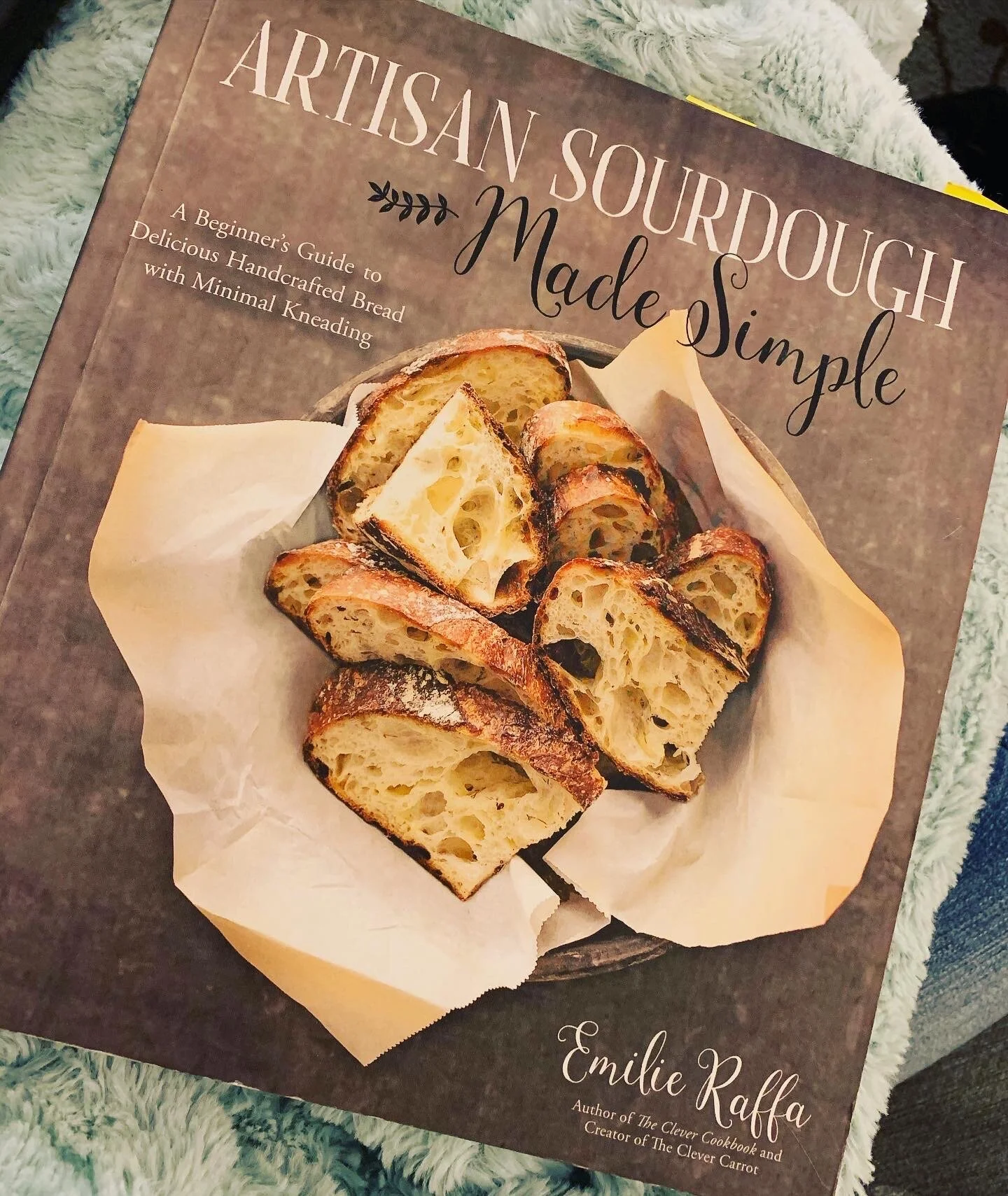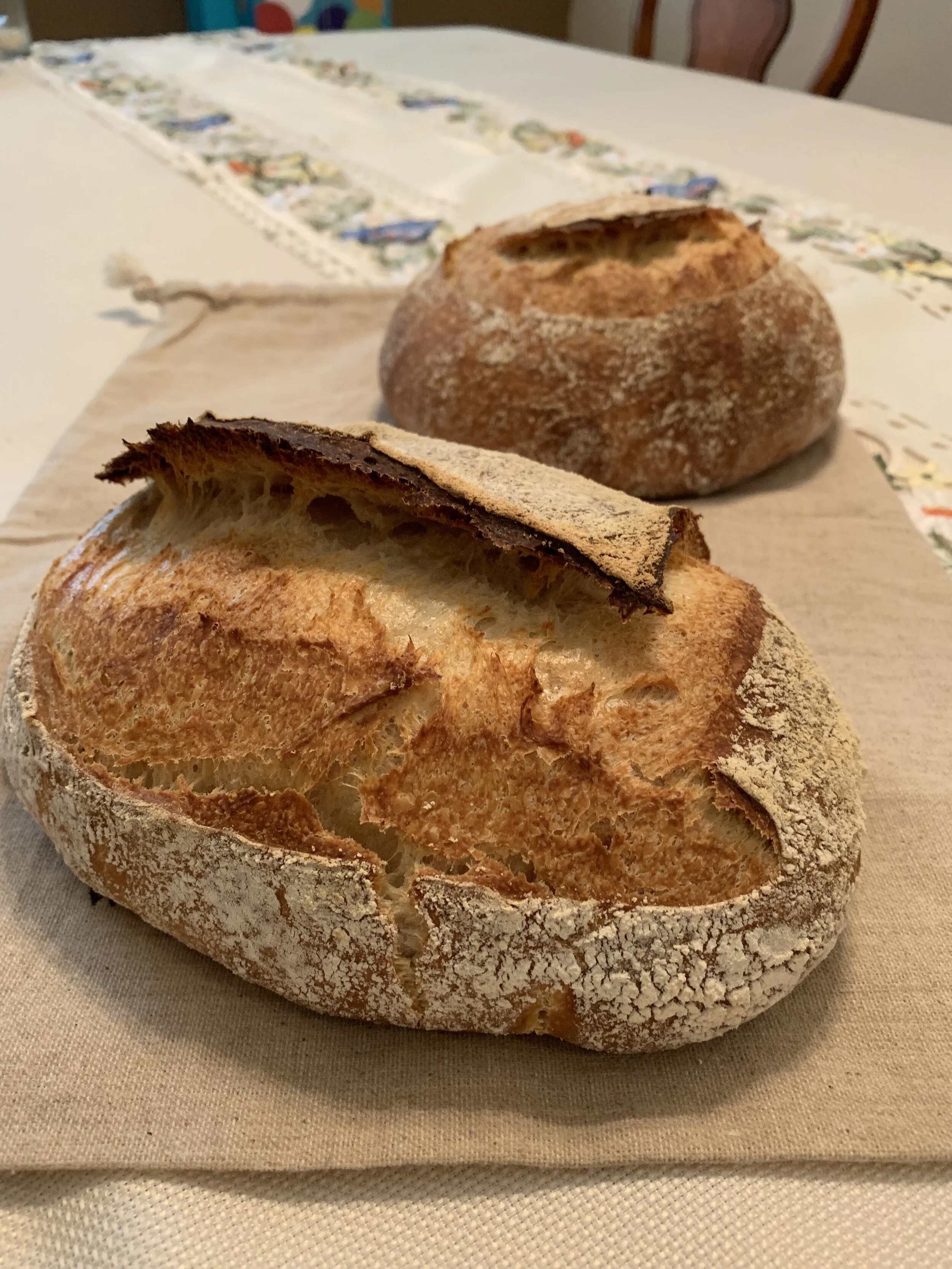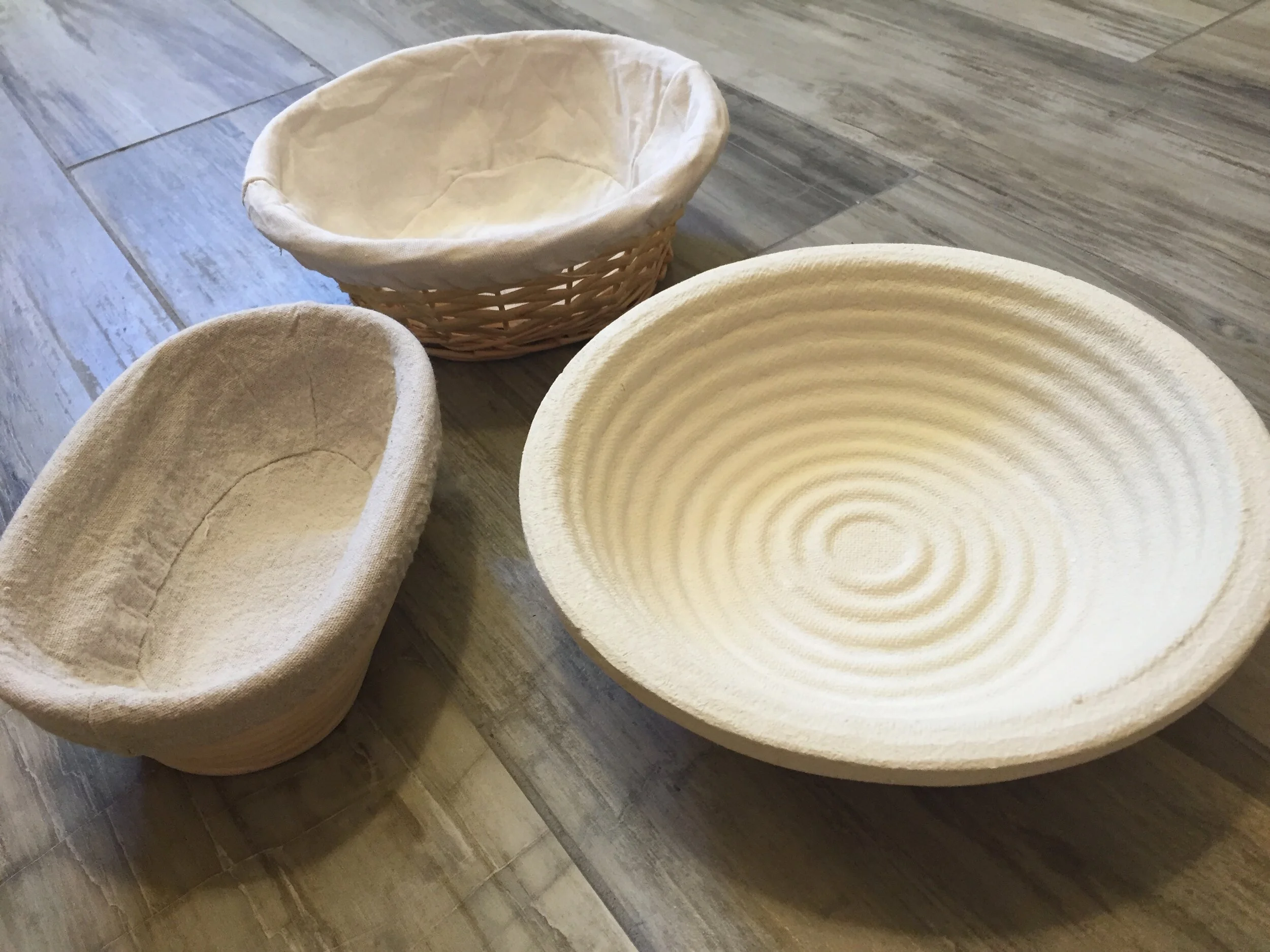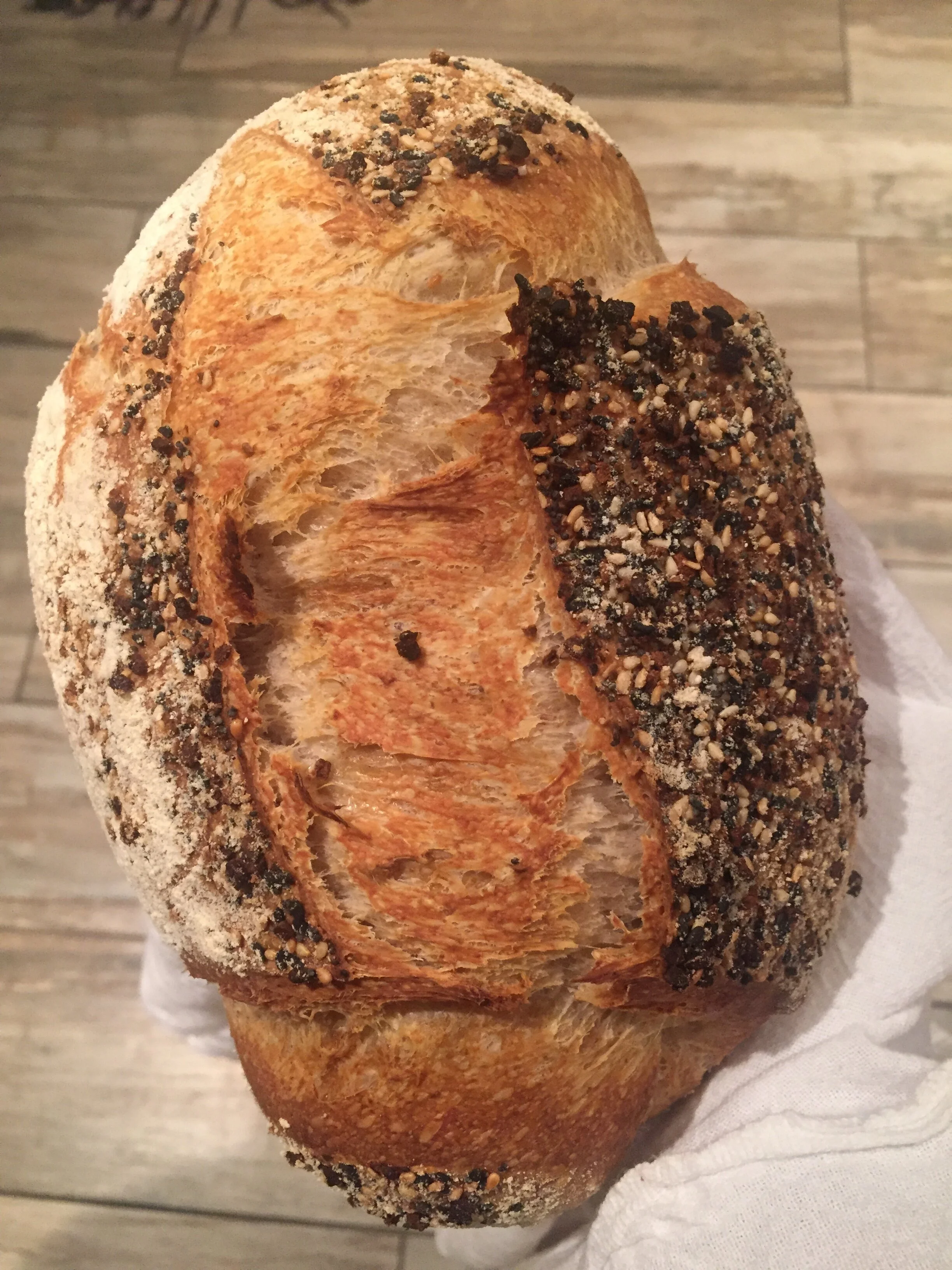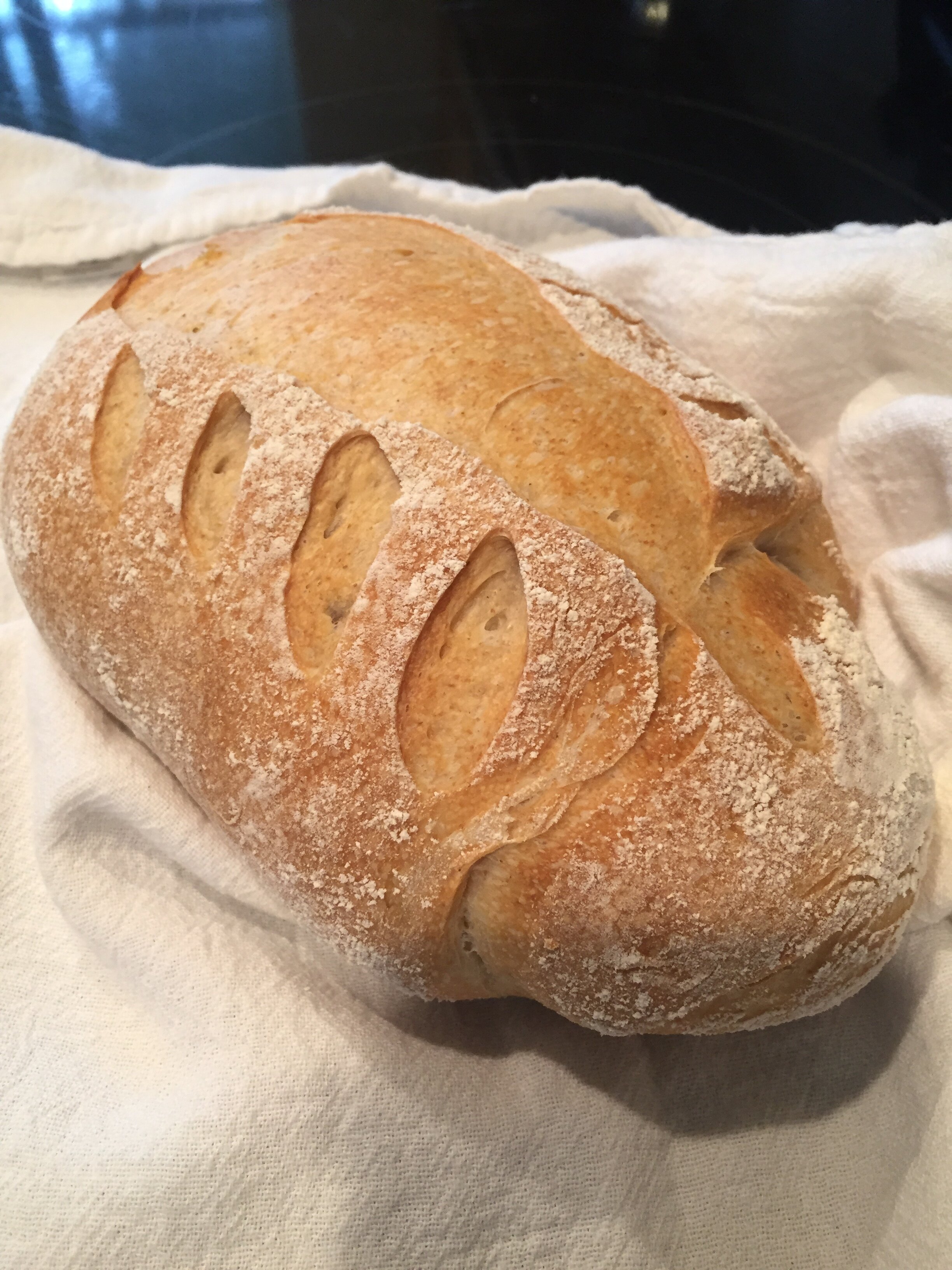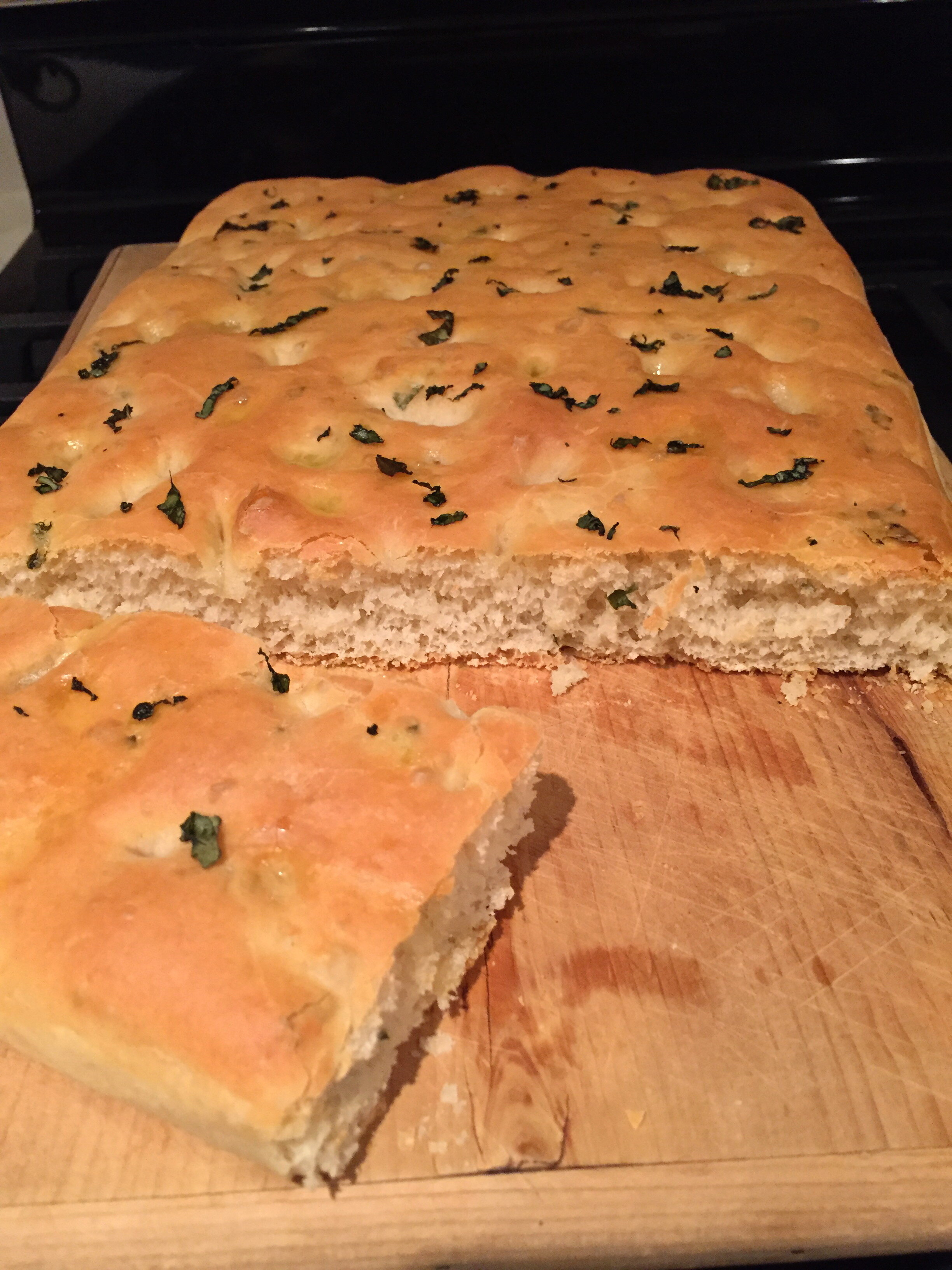My starter or levain after a feeding and ready to start baking.
I am a home sourdough bread baker. And, yes, I have a sourdough starter, or levain, made from just water, flour and wild yeast. And it hangs out in the back of my refrigerator between my weekly baking schedule. As the story goes it’s bad luck to not name your starter. I actually have never named it or referred to it as a ‘she’ or ‘him’. And, to be quite honest with you I did have to restart a couple of times due to lack of feedings or just because it got too gross and moldy to bake safely. So, I guess my starter is a third attempt success.
Why sourdough you ask? Well, for one I’m from the San Francisco Bay Area and I love sourdough. Nothing like going to Fisherman’s Wharf as a kid and staring in the Boudin Bakery window and seeing all the shapes the expert bakers made like a crab or the Golden Gate bridge out of bread. And, then getting a bowl made out of sourdough filled with piping hot chili beans or chowder covered in cheddar cheese. And second, sourdough is better for you because it uses a natural or wild yeast rather than commercial yeast. Commercial yeast comes in a package and can either be dissolved, like with water, or added in dry to a recipe to help fermentation occur quickly. Sourdough uses natural or wild yeast and is found in the air all around us. Which when making sourdough it takes longer to ferment and rise depending on the strength of your starter or how hot or cold it is out. I know, extremely confusing. Bottom line is sourdough is better on your gut because it’s more natural and easier for digestion. That’s as far down the rabbit hole we’ll go on yeast and benefits of sourdough for now.
A typical Sunday bake in my kitchen: A sourdough boule.
So where did I get the desire to become a sourdough baker? It started back in 2016 during a trip home to the SF Bay Area to visit my mom. We were watching the Netflix show, “Cooked” with Michael Pollan. And, as we watched the episode on, “Air”, it sparked my interest. As we watched the documentary my mom mentioned that was how my Nonna from Italy used to make her homemade bread. My mom was lucky enough to grow up with her grandmother under the same multi-generational roof, cooking and baking for the family. Unfortunately that gene skipped a generation and I’ve had to learn to speak Italian and do recipes on my own. So, of course I didn’t believe my mom because how can someone make bread with just water and flour and no yeast? And, that’s where I hopped onto the crazy train to find answers and see if I could bake bread like my Nonna.
Since my mom doesn’t remember how to make the recipes and only how they tasted, hence ’skipped a generation’. Plus, as an aloof teenager who wasn’t interested in spending time with my mom’s mother to learn our family recipes. And, my great grandmother, or my Nonna, passed away when I was a little girl. Therefore, I missed out on learning first hand. Which brought me to reading and learning as much as I could on my own. I took a day long sourdough class in a grammar school classroom that I found online in a sourdough group. We had to keep the lights off because the person who opened the building for us on the weekend couldn’t figure out how to turn them on. The woman who put the class on was a retired grammar school teacher and let’s just say, I’m glad she’s retired.
Another class I took was through The King’s Roost here in Los Angeles. The owner, Roe, is amazing. He’s energetic and loves sharing his knowledge about sourdough and other homemade products. My second starter came from Roe. During his sourdough wheat class we milled our own grains. And, I ate the most delicious combination of warm sourdough bread just out of the oven, freshly churned butter and dripping honeycomb. It was like my mouth died and went to heaven. And, I knew I needed to step up my sourdough game.
Emilie Raffa’s book I bake out of on a regular basis.
Then came Emilie Raffa and her website, The Clever Carrot. She broke it down even further for me on her blog. She had beautiful photos of her sourdough starter step-by-step. And, a simple basic sourdough bread recipe that has become one of my go to breads I typically bake weekly. I also purchased her book, Artisan Sourdough Made Simple, which I excitedly looked through tagging recipes that I wanted to make, some day. And, as I became a more confident baker I tried some of those recipes, some turned our better than others. Thank goodness for friends and family who were willing to try my mistakes. Because let’s be honest even mistakes are good with melting butter on warm bread. I'm currently eyeing her recipe for sourdough with chocolate chips as my next adventure.
Now that I have gotten into a rhythm of weekly sourdough baking it looks something like this:
Saturday late morning or early afternoon - I take my starter out of the refrigerator and put it on the counter.
Saturday late afternoon - I feed my starter. I’ll discuss more about feeding next.
Saturday evening - Typically after a couple of hours my starter has bubbles and risen which means it's ready to start baking. So, I begin the recipe by mixing the ingredients and then autolyse to let it rest. Then usually a few stretch and folds. And, finally cover and let it rise overnight until morning. If it’s mid-summer, I let it rise in the fridge to slow the process down. If it’s mid-winter I let it rise on the counter overnight.
Sunday morning - In the morning I shape the dough and let it rise again for about an hour in a proofing basket. And, finally bake in my cast iron pot with a lid for a fresh loaf of sourdough ready for Sunday brunch.
It’s a process, but it’s so worth it.
A little more about ‘feeding’ your sourdough starter. To put it simply it means to discard or throw away half of your unfed starter. (Don’t panic, you can use discard in other recipes like waffles, pretzels, crackers, etc.) Then ‘feed' your starter with equal parts filtered warm water and flour. Then mix it up and let rise to begin baking. Feeding keeps your starter active and healthy. Sometimes between feedings a purple-ish liquid will form. That is called a hooch and what makes your starter sour. It also means, it’s time to feed your starter. I pour mine off because I don’t want my starter to become too sour. Other people like to mix it back in. Your starter, your choice. A little advice, if your starter begins to smell like old gym socks, it’s time to discard the whole batch and start fresh with a new starter. And, keep your jar clean! I wipe mine down each time I feed it, inside and out. Don’t let mold grow at the top of the jar or inside. Otherwise, you’ll have to begin all over with a new starter.
‘Discard’ is unfed sourdough starter that you remove when you feed your starter. I get a little anxiety when I have to throw it away. And, thankfully a long line of sourdough bakers before me felt the same and came up with recipes for unfed discard. I like to make pretzels and waffles with my discard. Both are good to eat fresh. But, also good to freeze and take out midweek when you just want a treat or don’t feel like getting in the kitchen. I pop my frozen pretzels in the oven for about 5 minutes or microwave for 30 seconds and it’s like they were freshly baked. Same goes for the waffles, you can pop them in the toaster and off you go. Your own homemade frozen waffle.
Oakland, CA 1974 (L-R) My mom, me with the bottle, my sister, my dad and my Nonna.
For me, sourdough is delicious and fun to make. And, once you find your rhythm or sweet spot, it will just make sense. Don’t over think it. Baking and experimenting with sourdough has helped me feel relaxed after a stressful job. The repetition and kneading of the dough is comforting. Or sharing a loaf with family and friends has been a way for me to carry on our family tradition. I can imagine my Nonna making bread for my mom and her siblings in the kitchen as a way to share her love. Because food is love. So, go out and share a loaf and make our world a little better, one loaf at a time just like my Nonna.


